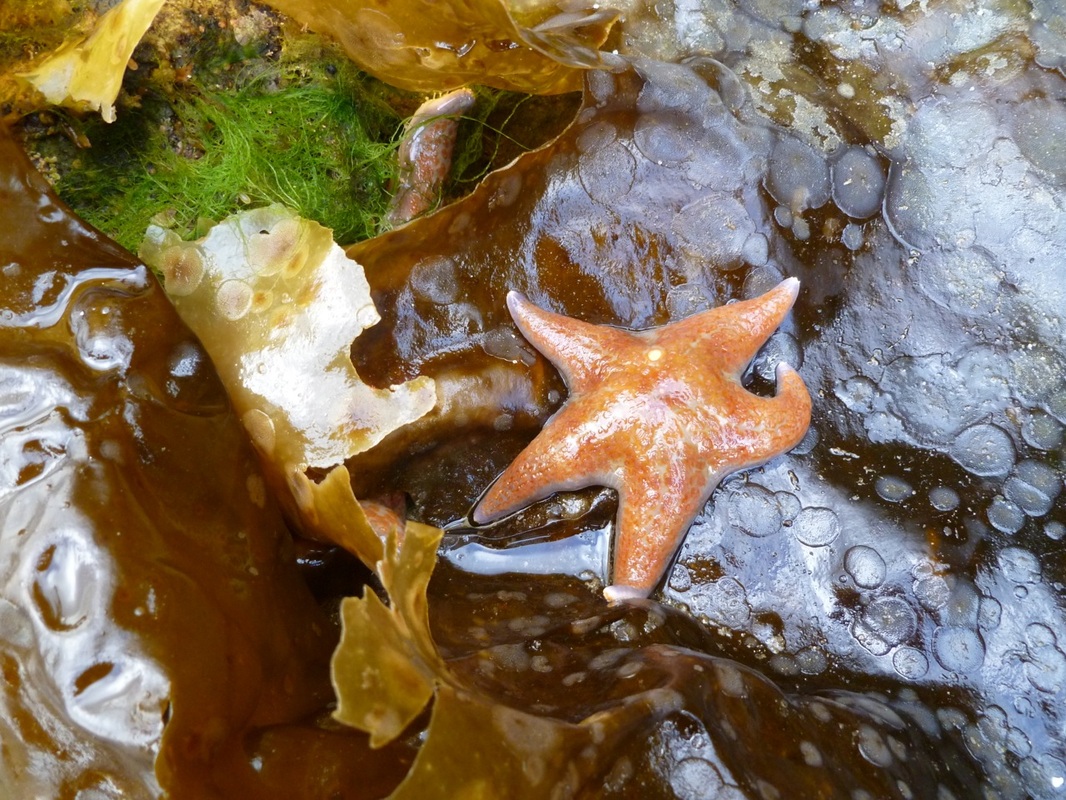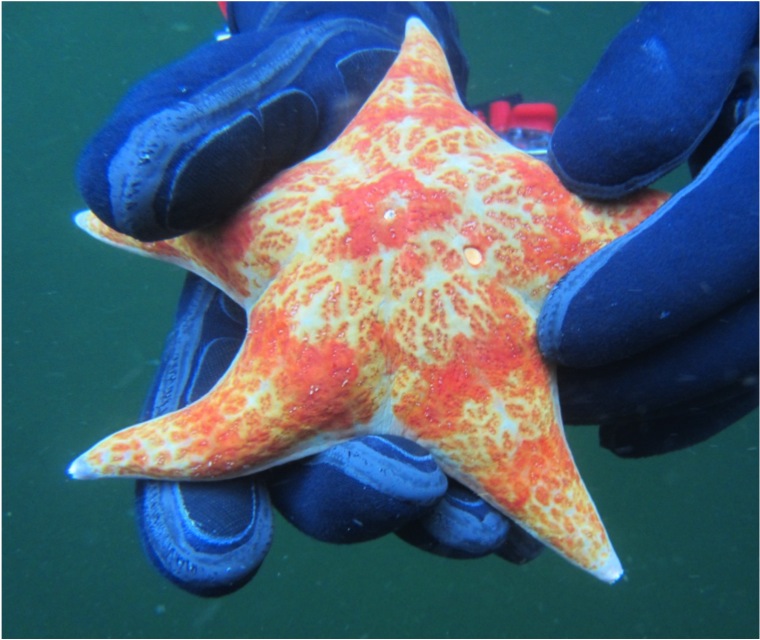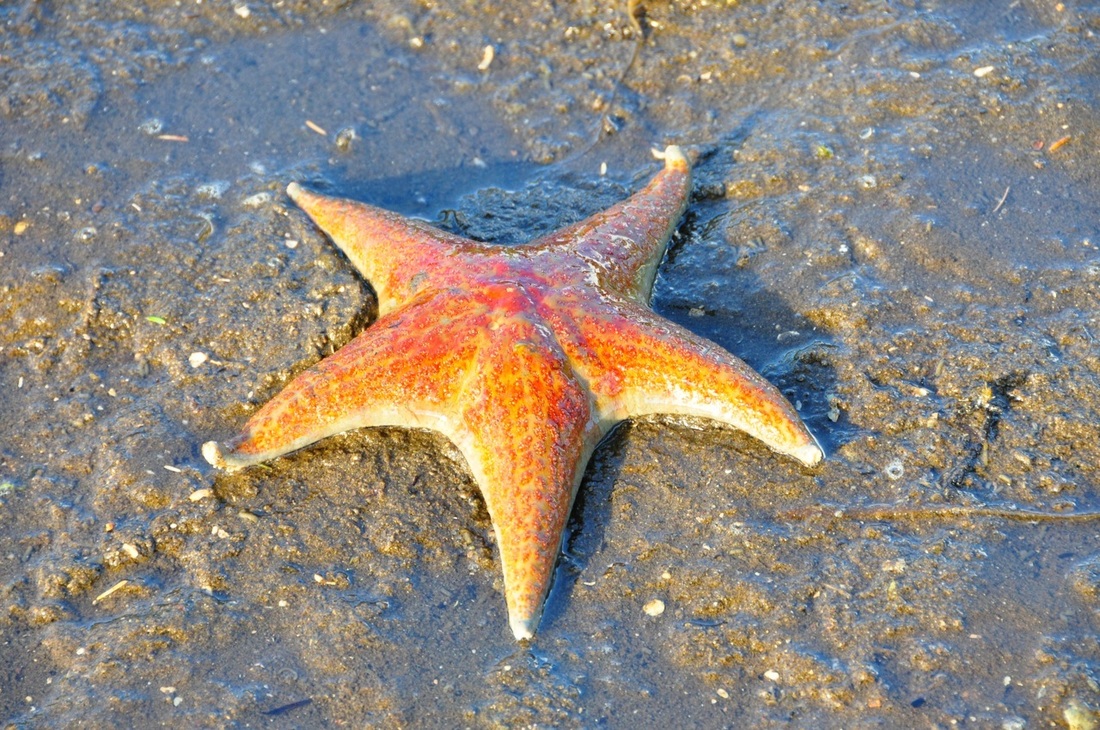Leather star, garlic star • Dermasterias imbricata
Identification
The leather star can be identified by its mottled, leathery, slick upper surface. It is generally grey to yellow or red with patches of red, brown and purple. Its five arms are shorter and broader than those of many sea stars. It ranges in size up to 30cm (12") diameters.
Habitat & Range
This sea star is found from the intertidal to depths of up to 90 m. It is common along the west coast of North America from southern Alaska to southern California.
Similar Species
The leather star looks somewhat similar to the bat star (Asterina miniata), a smaller species with a rough, scale-like surface compared to the smooth surface of the leather star. It is found up to 300 m deep.
Intriguing Info
The leather star is also known as the garlic star because it emits a strong garlicy odour.
iNaturalist
https://www.inaturalist.org/taxa/63382-Dermasterias-imbricata
The leather star can be identified by its mottled, leathery, slick upper surface. It is generally grey to yellow or red with patches of red, brown and purple. Its five arms are shorter and broader than those of many sea stars. It ranges in size up to 30cm (12") diameters.
Habitat & Range
This sea star is found from the intertidal to depths of up to 90 m. It is common along the west coast of North America from southern Alaska to southern California.
Similar Species
The leather star looks somewhat similar to the bat star (Asterina miniata), a smaller species with a rough, scale-like surface compared to the smooth surface of the leather star. It is found up to 300 m deep.
Intriguing Info
The leather star is also known as the garlic star because it emits a strong garlicy odour.
iNaturalist
https://www.inaturalist.org/taxa/63382-Dermasterias-imbricata
References
Harbo, R. M. (1999). Whelks to whales: Coastal marine life of the Pacific Northwest. Madeira Park, BC: Harbour Publishing. P. 133.
Dermasterias imbricata (Grube 1857). Marine Biodiversity of British Columbia. Accessed 02/08/2013.
Authors and editors of page
Chanda Brietzke and Brian Starzomski (2013).
Harbo, R. M. (1999). Whelks to whales: Coastal marine life of the Pacific Northwest. Madeira Park, BC: Harbour Publishing. P. 133.
Dermasterias imbricata (Grube 1857). Marine Biodiversity of British Columbia. Accessed 02/08/2013.
Authors and editors of page
Chanda Brietzke and Brian Starzomski (2013).







